Spread across the grounds of the Künstler*dorf, nine signs provide information about the historical background, developments and the program of the Künstler*dorf. The author Grashina Gabelmann conducted interviews with contemporary witnesses, founders and contributors.

You can find an excerpt of the contents here.
Let the orally-told stories take you into the background of this place!
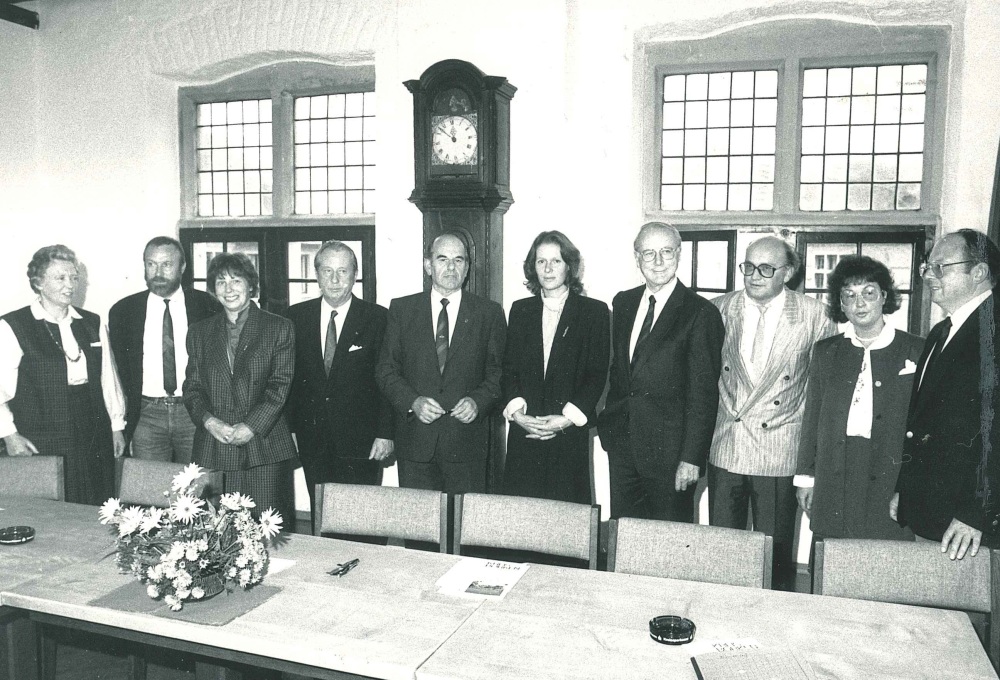
Board of the Friends of the Künstler*dorf Schöppingen, founding event on 27.9.1988 in the Old Town Hall Schöppingen, photo: Janny Heisterborg
The idea of the Künstler*dorf, as an urban gem, took shape through the vacancy of the Schulze Johann farm and the further purchase of the Schulze Dorfkönig farm in the center of Schöppingen. Due to their characteristic construction, using the yellowish sand-lime brick typical of the area, the farms were listed in 1985 as important documents of rural building culture.
Today’s „Court of Literatur“ was created from the former Schulze Johann farm, which was built by August Schulze Johann from Telgte around 1878. In 1907 an independent outbuilding was added, which was used for baking bread. In 1933, this outbuilding was integrated into the residential house and received its current building structure. The function, however, changed from bakehouse, to pigsty, to the current use as a library. Today, the former chicken coop houses two apartments and an exhibition hall.
Today’s „Court of the Arts“ was built in 1903 as the home of Bernhard and Mathilde Schulze Dorfkönig. The threshing floor, which today houses the workshop, originally dates back to 1839. Until it was sold and functionally rebuilt in 1989, this farm maintained numerous livestock on site, which also provided the impetus to move the farm out of the village center and put it to a different use.

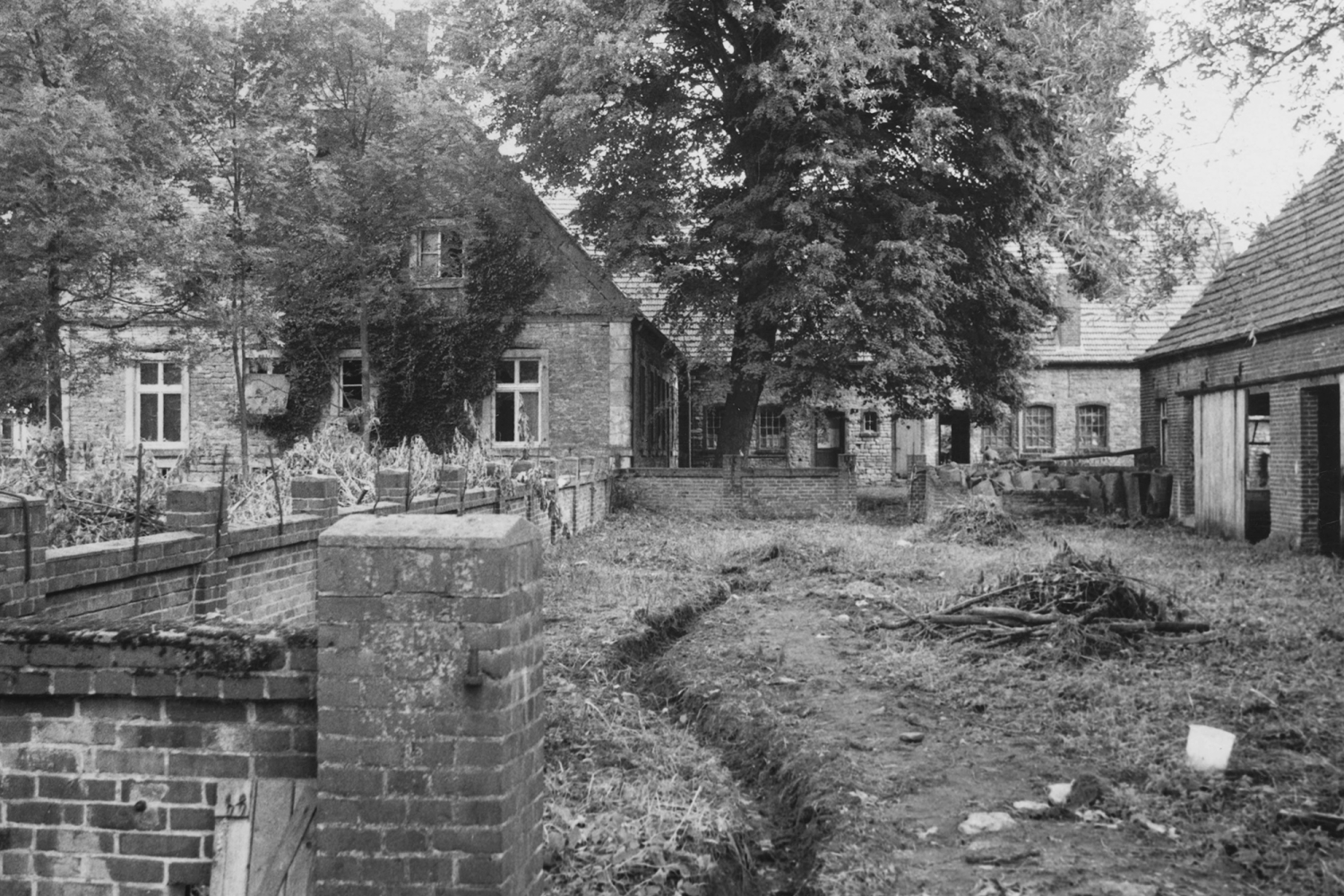
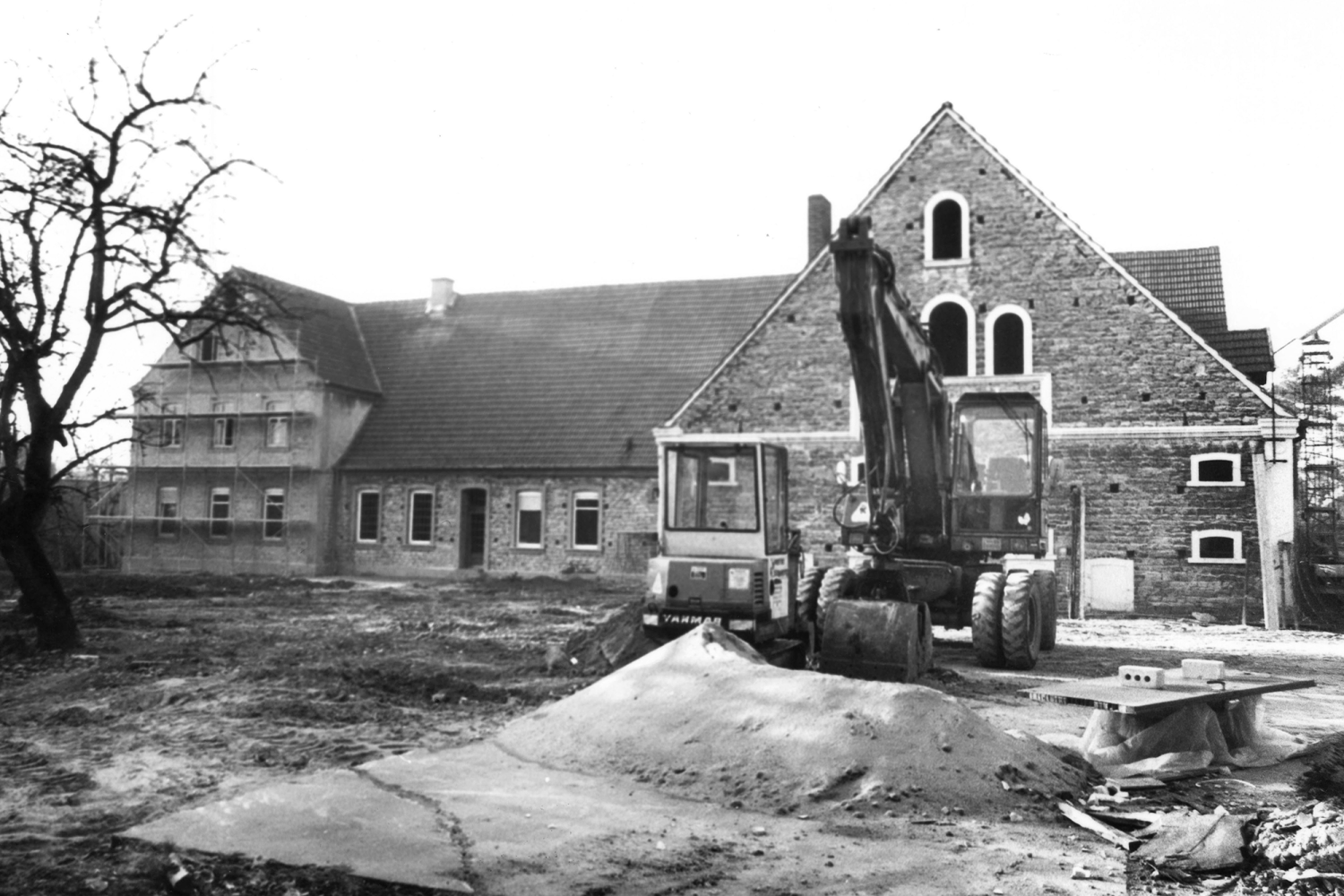

Since its foundation in 1972, the „Heimatverein Schöppingen“ has set itself the goal of preserving and promoting special features and traditions of the village and the region. This includes the cultivation of local customs, the dialect „Münsterländer Platt“ and „Schöppinger Platt“ as well as the organization of and participation in community-promoting festivals and events. These include the Easter fire, the potato festival, the apple festival and numerous activities.
Today, the „museum barn“ serves as an exhibition space for old agricultural and household objects and equipment. It was expanded over time and furnished to individual thematic areas. Originally, the barn was built in the 19th century as a so-called „mice barn“. In this function, it was used to store grain and was placed on stones so that mice could not get inside. After the barn was no longer in use and weathered, it was dismantled down to its basic structure and restored on the initiative of the heritage association until it was finally opened as a museum barn on September 30, 2001.
The museum barn is open, except in the winter months, usually on the first Saturday of the month from 10 to 12 am.
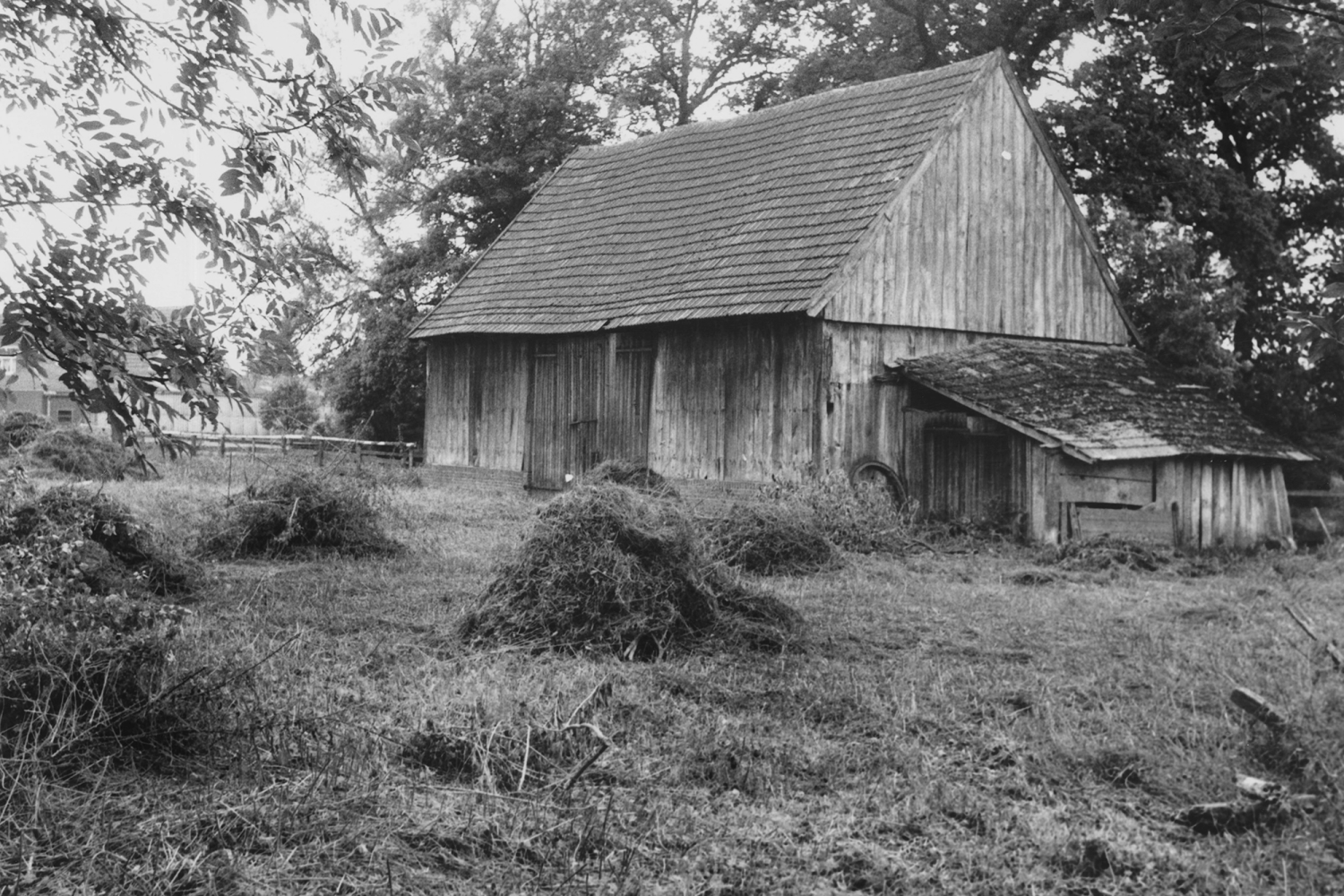
The former “mice barn”


Inauguration of the new museum barn on 30.9.2001.
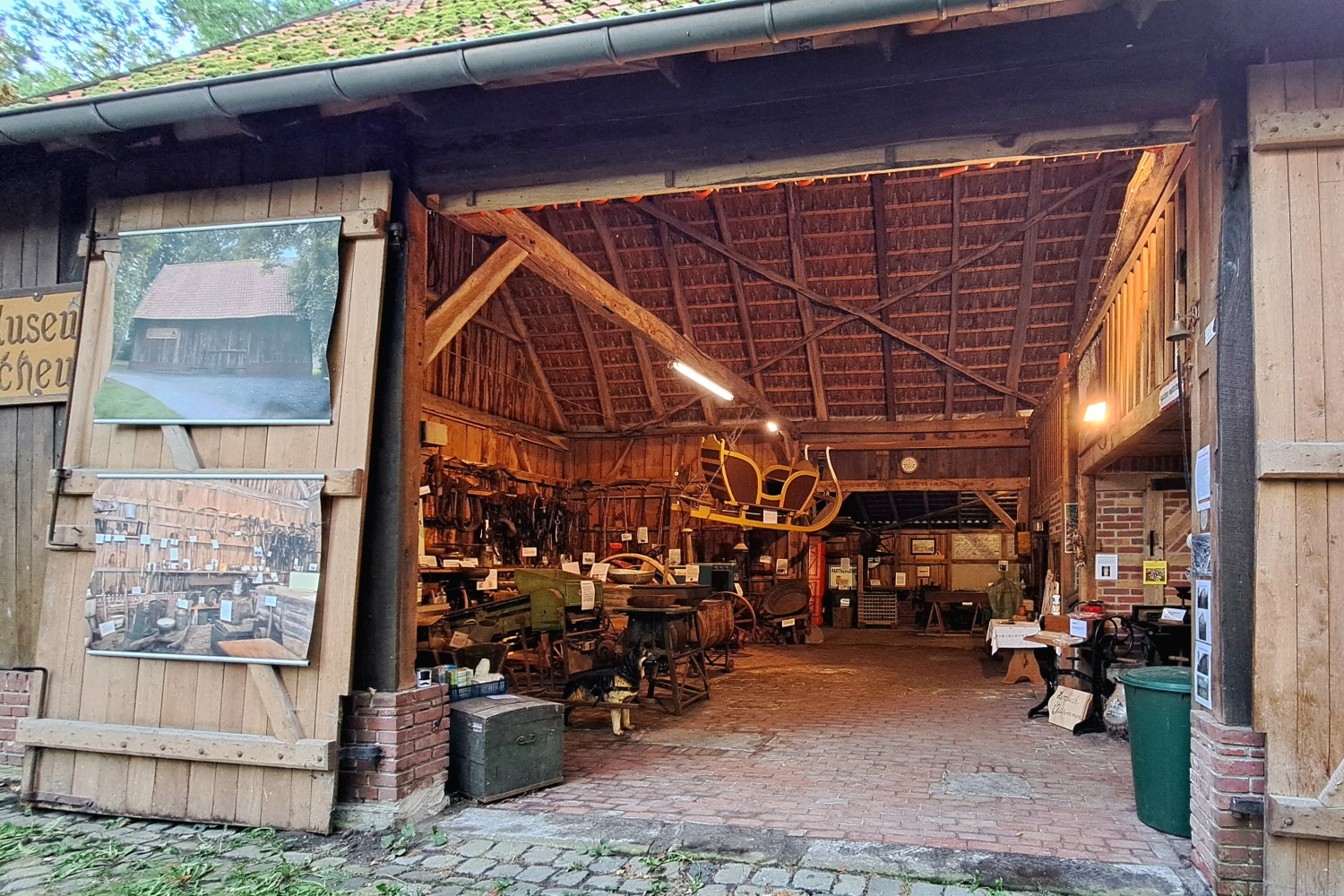
The museum barn today.
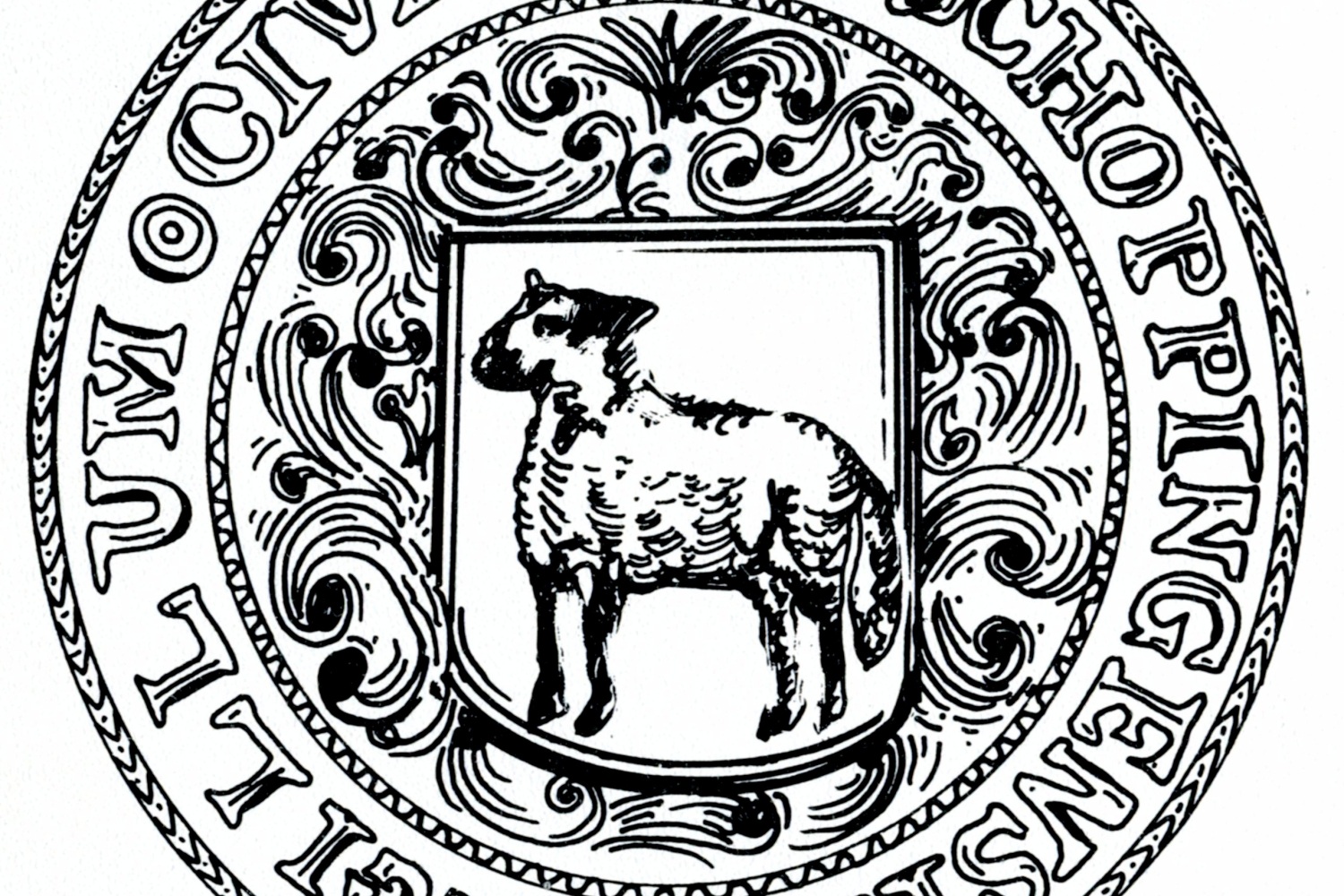
In a deed of donation from Ludwig the Pious to the Herford monastery in 838, the name pagus Scopingus is mentioned for the first time. This name refers not only to a settlement but also to an extensive prince-bishop judicial district (Gogericht), a Gau. In this name „Scopingus“ the later name Schöppingen can easily be recognized.
In 1583 it was decided to build a council and community house. Together with this building, the „Old Town Hall“, a local coat of arms was introduced at the same time.
The well-known coat of arms with the sheep was created at that time by interpreting the old name Scopingau as „Schafsgau“ and thus choosing the sheep as the heraldic animal.
According to recent research, however, another interpretation of the word „Scopingau“ is also possible, namely that the old gauname Scopingau originated from the word „Schöpfen“, as in Schöpfen from a spring (such as the spring below the parish church of St. Brictius).
From today’s point of view this view is more logical than to interpret the name Scopingau as Schafsgau.
Residency programs provide artists with time, space and resources to focus on individual projects or issues, detached from their normal everyday environment and its constraints. As artistic practices and needs have changed over the years, so has the work and infrastructure of Künstlerdorf Schöppingen. Through forms of co-production, knowledge transfer and collective learning, relationships are additionally strengthened and ultimately bridges are built between disciplines and lived experiences.
“Residencies for artists and curators have gained increasing significance within the ecosystem of contemporary art in recent years as crucial nodes in international circulation and career development, but also as invaluable infrastructures for critical thinking and artistic experimentation, cross-cultural collaboration, interdisciplinary knowledge production, and site-specific research.”
-Taru Elfving and Irmeli Kokko, in: „Contemporary Artist Residencies. Reclaiming Time and Space”, 2019
„Residency programs are successful worldwide as a tool for cultural exchange. In view of growing global interdependencies, residency programs have become a central resource for knowledge transfer, networking and international cooperation. At the same time, they are constantly facing new challenges. This concerns, for example, growing demands for environmental sustainability and long-term effectiveness.“
-ADIR (Working Group of German International Residency Programs), 2023
„Our project – a gem of art, exchange, encounter and reflection.“
-Dr. Claus Urban, first director of the Volkshochschule Ahaus (1974-2008) and co-founder of the Künstler*dorf Schöppingen
Farewell to Rolfrafael Schöer, December 4, 1996
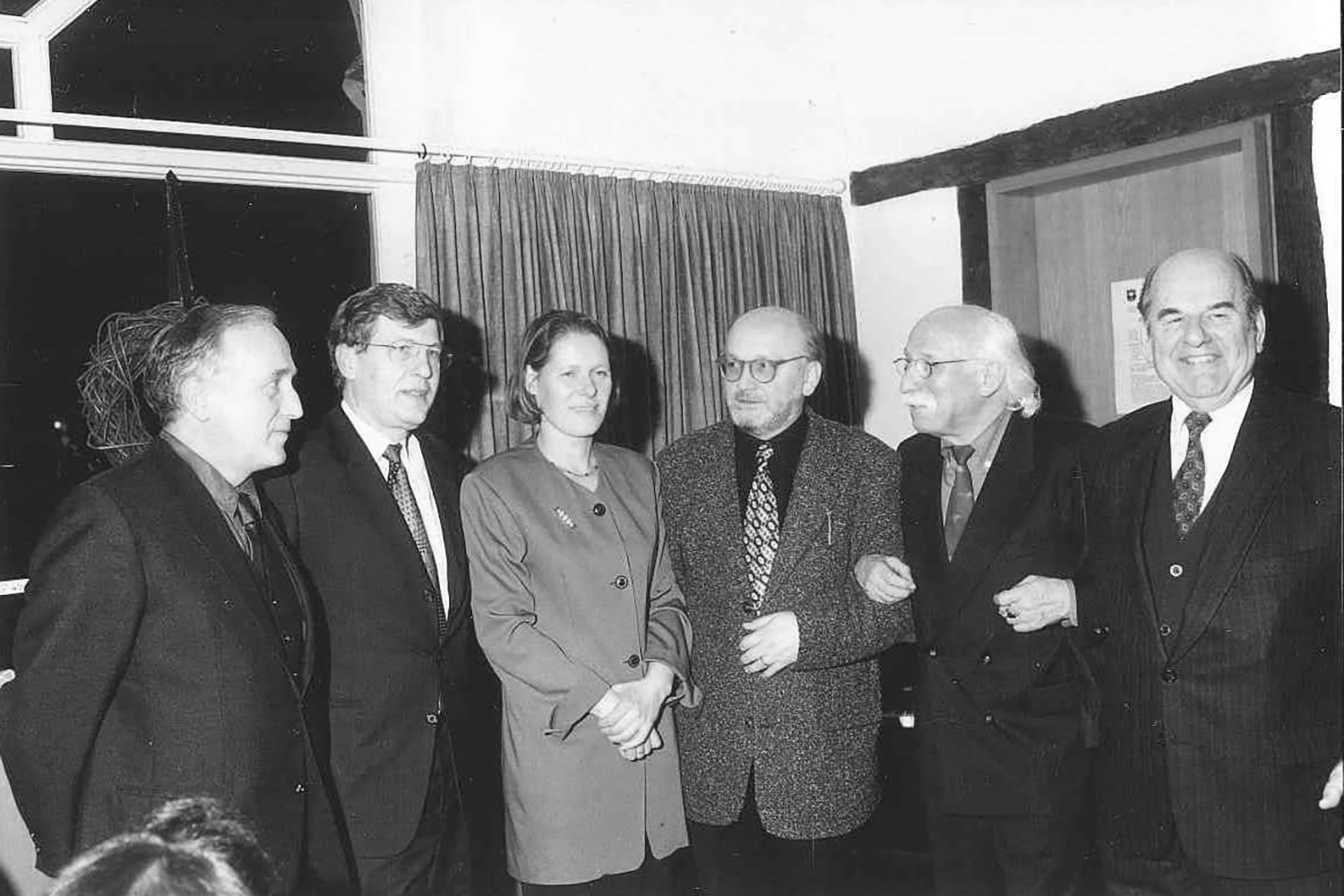

„And these conversations, which sometimes went on into the night, where they didn’t just talk trash and fool around, but really rolled out problems, authors‘ problems or social problems, I actually miss those times.“
-Rolfrafael Schröer, founding director of the Künstler*dorf Schöppingen from 1989 to 1996, in an interview with Dr. Enno Stahl, on January 27, 2010.
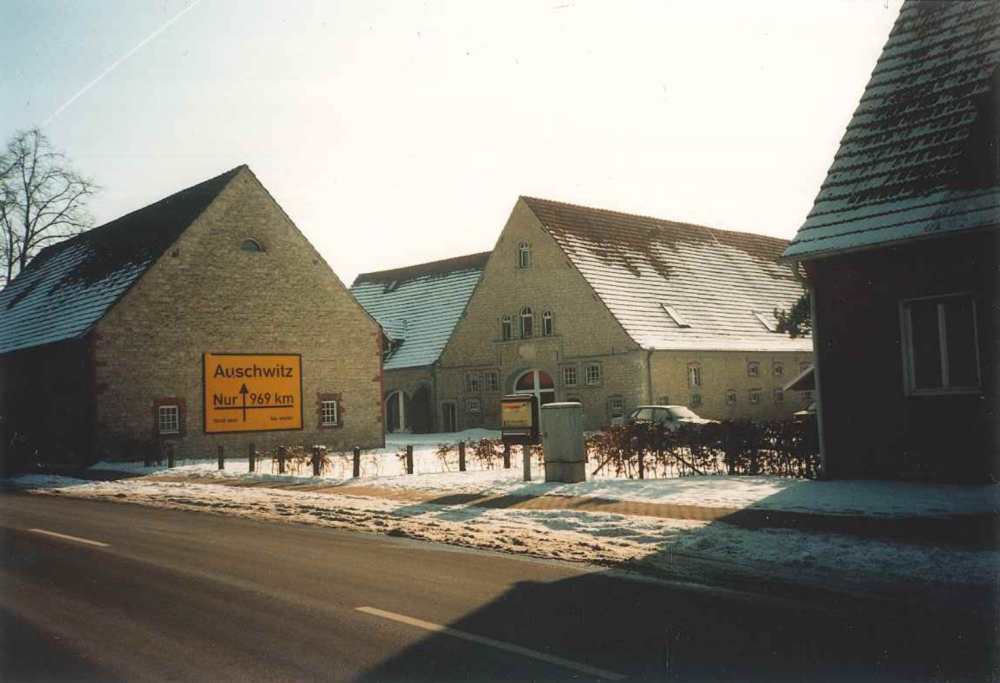
The two-by-three-meter sign with the inscription „Auschwitz, only 969 km – never again“ by Pier van Djjk had been installed in 1995 as part of the project „50 years of liberation from fascism“ and hung as a monument against fascism and tyranny on the outside wall of the Künstler*dorf for twelve years.
Participation in Regionale 2016, a structural funding program of the state of North Rhine-Westphalia, made it possible to both modernize the culture hall, redesign the areas around the Künstler*dorf and renovate the town hall.
„The innovative potential of the project „Kraftwerk Künstler*dorf“ results from its interdisciplinary orientation as well as from the combination of different levels within the overall concept. Its ambitious goal is to test the interplay of the technical possibilities of renewable energies with artistic-aesthetic offers against the background of the energy turnaround.
In the „Power Stations“ module, exemplary works of art were created that combine aesthetic, spatial planning and ecological perspectives with the purely technical as a whole. By considering energy from an artistic point of view, the intellectual and aesthetic components are seen as equal to the technical processes. Spatially, the project is located in the outdoor space of the actual power plant headquarters, namely the multifunctional culture hall. With the „power stations“ by José Antonio Orts „Wäldchen“ and Franziska Wicke/Jadranko Barišić „Kardo“ impressive project components could be realized. Thus, together with the already existing artistic works, for example by Franz John „Ressource Farbe“ or by Silvia Wienefoet „Leuchtfeuer“, a multi-layered ensemble on the theme of „Art and Regenerative Energy“ is developing.“
Dr. Josef Spiegel, managing director of Stiftung Künstler*dorf Schöppingen from 1997 to 2020
Excerpt of the visualization of the power stations © Büro brandenfels landscape + environment, Münster
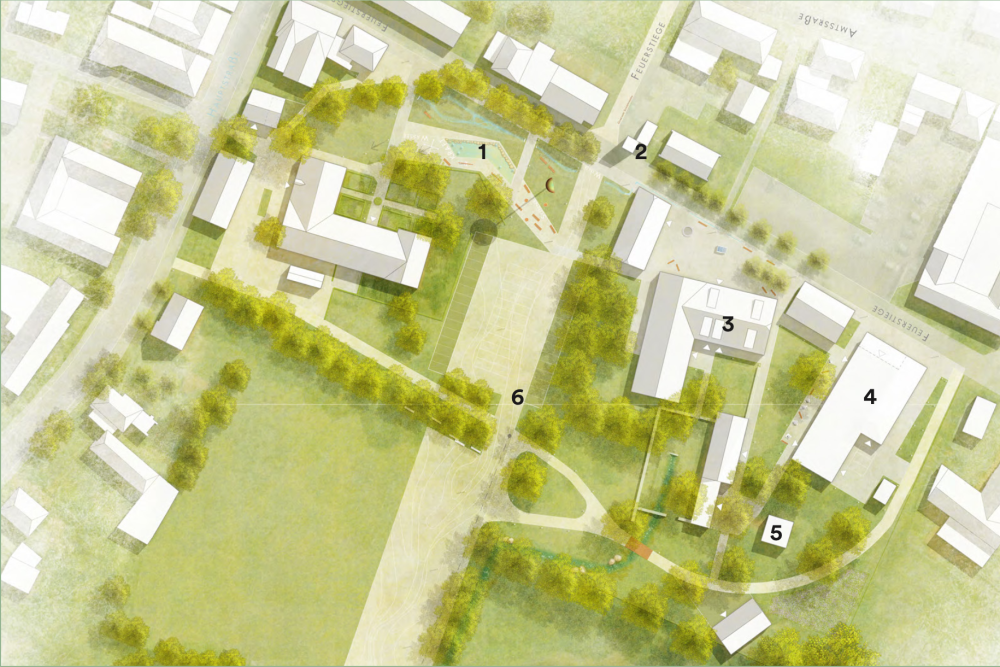
1. Water Playground
2. Franz John „Ressource Farbe“
3. Silvia Wienefoet „Leuchtfeuer“
4. Kulturhalle “Kraftwerk”
5. José Antonio Orts „Wäldchen“
6. Franziska Wicke/Jadranko Barišić „Kardo“
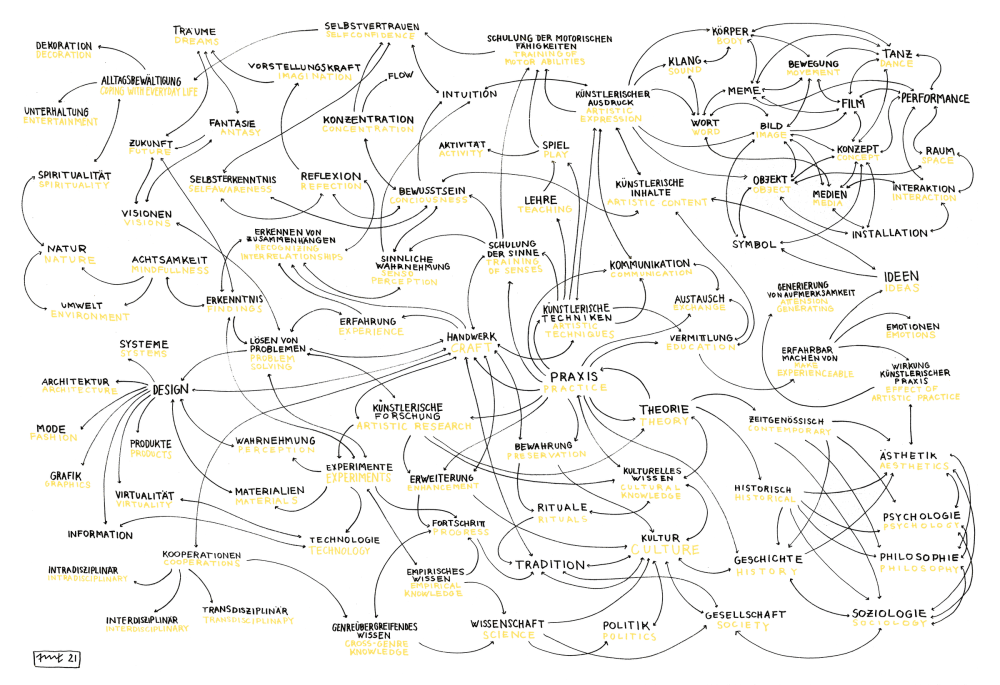
What do we build on? What do we tie in with?
© Juliane Maria Hoffmann, 2021
“Gardening together can build community. A new relationship with the earth, with the plants can bring about a renewal of the people who garden. That is why I came and my expectations to transform myself, in the accompaniment of this process, have also been fulfilled.”
